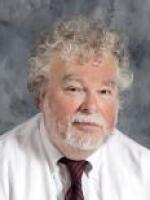If you travel through the Buffalo Niagara Medical Campus, the Hauptman-Woodward Medical Research Institute is one of the more distinctive buildings, with most passersby probably not knowing much about what goes on inside. This spring, the institute will be moving up in the worldwide medical research community.
Herbert Hauptman won the 1985 Nobel Prize for his work in crystallography, the complicated work of building crystals for medical research. Crystal research remains important in medicine, but those computer gadgets have come along to do the same, perhaps more quickly.
That is why the institute will soon start using its new Cryo-electron microscope.
Sometime this spring, Hauptman-Woodward will have its machine up and running in collaboration with research centers around the world. President and CEO Edward Snell said the scanner lets researchers, like those dealing with COVID, look at the process of life.
"Produces pictures of what the building blocks of the body look like," he said. "So when you hear the term the spike protein, that’s bandied about a lot with how COVID-19 infects us, this is the kind of thing that can take that protein and visibly show us how that infection takes place."
Snell said researchers around the world are waiting for this.
"It is the cutting edge of structural biology and without it, you’re not really in the game," he said. "Totally new technology. Nobel Prize awarded about three years ago for it and it’s just tremendously exciting. It’s helping make the difference for a lot of groups in this COVID-19 pandemic."
The $4.4 million project is a car-size machine with tanks of liquid nitrogen. It also has leading-edge energy storage, using tech from some local companies to smooth the electricity flow and make sure the lights don’t dim when the large machine is running.
"We do have a fairly sophisticated energy storage system that is being prototyped with this instrument, and that allows us to store the cheaper electricity at night and use that electricity during the day," Snell said. "And the other thing about it is, it may well benefit the results from the very smooth electricity that’s provided."
That electricity is needed because the microscope's liquid nitrogen must be kept very, very cold to make the device work.






